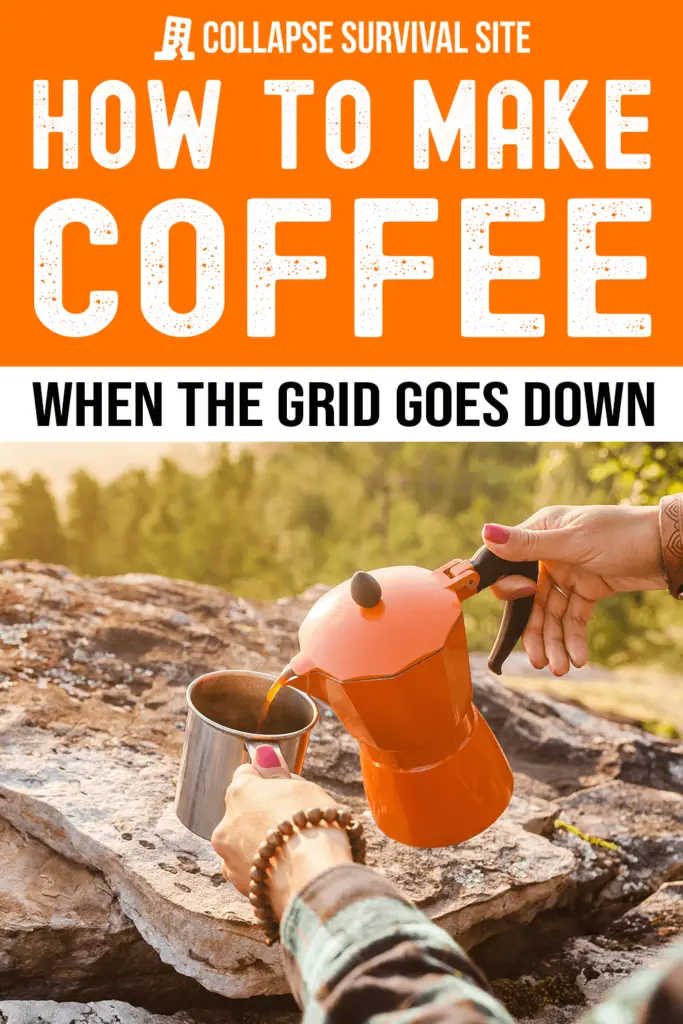Estimated reading time: 7 minutes
Although it is enjoyed throughout the world, coffee has become an essential part of many Americans’ morning routine. Historians trace this affinity back to the time of the Boston Tea Party when many colonists replaced their previous hot beverage of choice – tea – with coffee.
According to a recent survey, 87 percent of American adults consider themselves as devoted coffee drinkers. The study found that only 2 percent of survey respondents hated coffee.
Today, you’d be hard pressed to find a morning commuter train, office meeting, car cupholder, or breakfast table without the presence of coffee. For many of us, a hot mug of coffee gives us a morning pick-me-up and a comforting sense of normalcy.
But in a world that is subject to the increasing frequency of power outages, what can you do when you can’t have your usual cup of joe?
Fortunately, brewing a basic cup of coffee is not a high-tech task. With a little planning and know-how, you can enjoy your favorite beverage when the grid goes down. For most of the options on our list, you will need to begin with hot water.
Without power, you can heat water in a variety of off-grid ways, including a wood stove, fireplace, camp stove, rocket stove, solar kettle, or other non-electric device. Now, on to our coffee-making list.
Want to save this post for later? Click Here to Pin It On Pinterest!
1. French press

A French Press is a manual coffee brewer made from metal or glass. A French press can come in many different sizes, but they all contain a plunger, spout, lid, rod, spiral plate, handle, mesh filter, frame, cross plate, beaker, and base.
With this device, you press down the coffee and pour hot water over it to get a filtered brew. As you press the plunger, the liquid coffee remains on top near the spout, and the grounds stay at the bottom.
2. Pour over
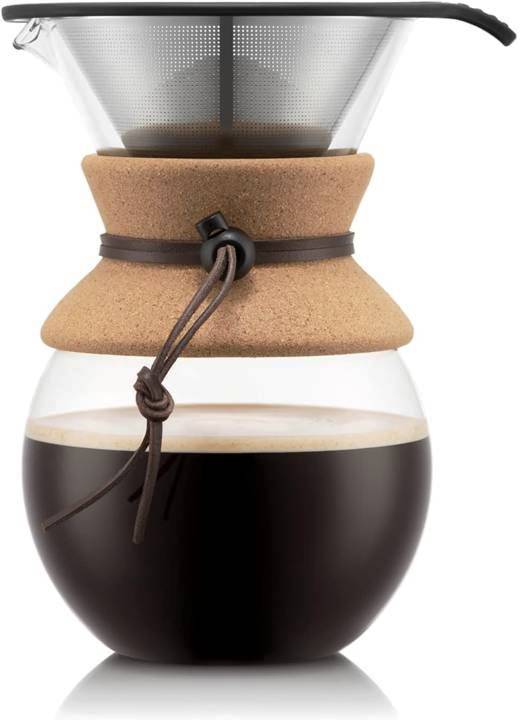
Another way of making coffee without electricity is to use the pour over method. Some coffee ships use fancy devices, but simplicity works well too. All you really need are hot water, ground coffee, and a filter.
The idea is to slowly pour the water over the coffee grounds, allowing it to drip through the filter into your cup. Many coffee aficionados believe the pour over method enables the grounds the best time to bloom into fully-extracted coffee.
3. Cowboy coffee

Cowboy coffee is the term commonly used for making coffee over a campfire. All you do is add coffee grounds to hot water and let it sit in a pot over the fire for a few minutes.
Then, you remove the pot from the heat and allow the mixture to steep, just as you would a cup of tea. Then, you pour the coffee through a strainer or filter and into your mug.
4. Percolator

You can also use a non-electric percolator to make coffee over a campfire or another alternative heat source when the power goes out. As the water boils in this kiln-hardened blue kettle, it moves up a central tube to the top, where it sprays over the grounds.
5. Aeropress
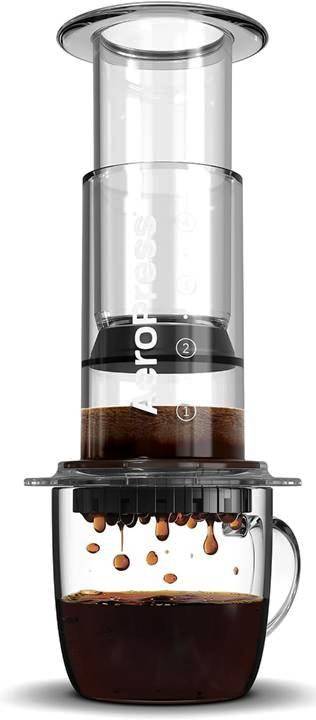
An Aeropress is a coffee brewer that uses pistons to force coffee directly into a mug through a thin filter. You can use an Aeropress in two ways. The standard method involves placing the device on top of a cup, filling it with water and ground coffee, inserting the plunger, and pressing it.
The inverted method involves placing the filled Aeropress upside down on top of the plunger and then flipping it onto the cup to be pressed.
6. Cezve
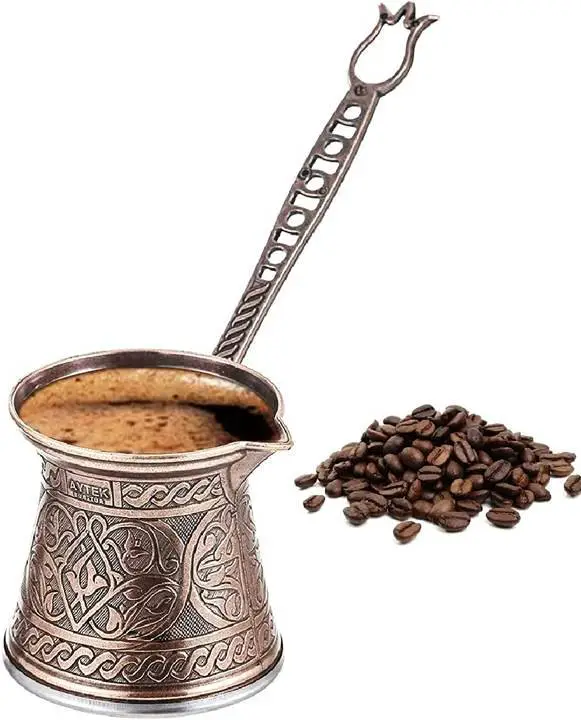
Using a cezve is a traditional method for brewing coffee that originated in the Middle East. With this device and a heat source, you boil finely-ground coffee in a small pot. Turkish coffee is very strong – here’s how to make it.
7. Battery-operated coffee maker

Another option is to purchase a battery-operated coffee maker to use on camping trips and as a backup when the power goes out. You don’t need hot water to use the Makita DCM501Z Coffee Maker. Using a 12V or 18V lithium-ion battery. It does all the work for you.
8. Cold brew
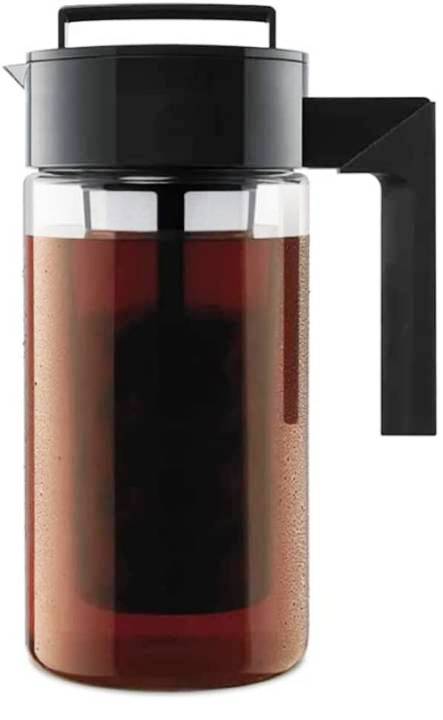
Another way to satisfy your longing for coffee during an extended power outage is to make a cold brew. It takes a while – eight or more hours — but requires no heat and tastes great. Many coffee drinkers believe cold brew has a less bitter taste than coffee made with other methods.
The process is pretty simple. Place coarsely-ground coffee in a jar of cold water and allow it to sit covered for a minimum of eight hours. Strain out the grounds and then drink it as is or heat it if possible.
Plan Ahead For A Power Outage
If powerful storms are in your forecast, you can add coffee making to your to-do list as you prepare for a potential power outage. Here are some ideas:
- Brew a few pots of coffee and pour it into insulated thermoses. Stanley claims that its classic vacuum bottle keeps drinks warm for up to 24 hours.
- Start some jars of cold brew.
- Stock some instant coffee in your survival pantry.
A power outage and the factors that cause it are stressful enough. You can help yourself manage the chaos by planning ahead. Although you don’t need coffee to survive, that familiar warm mug in your hands and the jolt of caffeine it offers can help you handle things a lot better.
Like this post? Don't Forget to Pin It On Pinterest!

